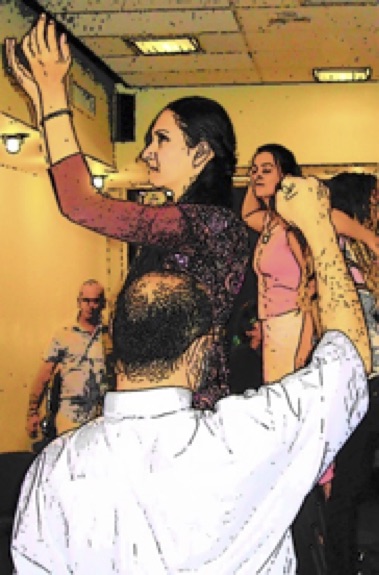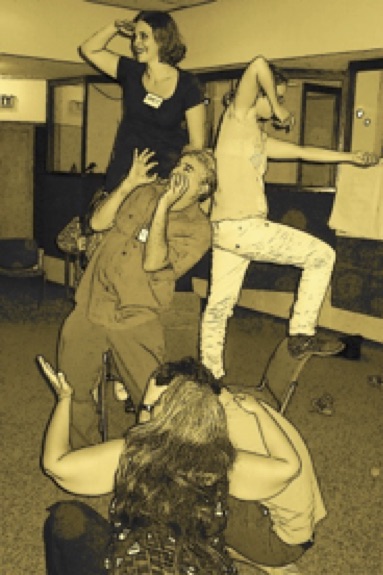Memory work and unsettling empathy: Two essential components in intercultural encounters
By Björn Krondorfer
In my work as facilitator of intercultural encounters in which the issue of reconciliation plays a key role, we often touch on traumatic memories. Traumatic memories always have the power of social exclusion, because they cement one’s perception of the world by holding on to certain "truths" relevant to large group identities. Reconciliation – here generally understood as a regaining of broken trust – counters exclusionary mechanism, for it tries to build bridges where acts of discrimination, prejudice, hatred, or violence have pulled people apart.
I have found two components particularly helpful in reconciliatory processes that aim at neutralizing exclusionary dynamics. One is memory work (a concept familiar to people engaged in "learning from the past"), the other unsettling empathy (a concept I suggest we need to pay attention to). Both of these components work best when equal weight is given to cognitive as well as affective levels of recognition and learning.
Conflicts beyond the time-frame of one generation
The phrase "learning from the past" implies temporal duration, and in my work I mostly engage with groups where conflicts have endured beyond the time-frame of one generation. When conflicts stretch over generations, it is crucial to actively work with injurious and traumatic memories. Haunting memories motivate social groups in conflict to act in particular ways: fortifying communal borders, defending group identities, clinging to collective stories of suffering, or believing in tales of a heroic past. In contrast to simply having memories that get reiterated in families and communities, memory work is the attempt to actively engage troublesome memories. Indeed, I have found this element so important when interacting with young adults from different backgrounds that I have come to call my approach "intercultural memory work."
"Intercultural memory work"
Over the years, I have worked with third-generation American Jews and their non-Jewish German counterparts in one-month long summer programs on the effects of Holocaust and the war (while traveling together in the United States, Germany, and Poland). I also worked with American students from different racial, ethnic, religious, and cultural backgrounds in five-day Racial Reconciliation retreats as well as with Palestinians, Israelis and Germans in intergenerational seminars on building bridges. Numerous shorter reconciliation projects have ranged from addressing apartheid in South Africa to student field trips that focused on migration and human rights issues on the Arizona-Mexican border. Though each of these encounters differed in a number of ways, the guiding paradigms remained the same:
-
engaging in alternative forms of communication that require risk-taking, vulnerability, and honesty
-
practicing careful listening, straightforward responding, and empathic imagining
-
attending to the impact of family biographies, communal memories, and national histories
Family biographies are interweaved with national histories
When groups who are (or have been) in conflict with each other meet in reconciliatory settings, they begin to realize how intimately their family biographies are connected to national histories. Part of the memory work, then, is to foster an awareness of larger societal frameworks that characterize each group’s affective experiences vis-à-vis historical memory and current conflicts. It greatly matters, for example, whether one’s own community endured wounding at the hands of others or whether one’s own people were (or are) linked to culpable wrongdoing. Belonging to large-group identities leads not only to different cognitive understandings of one’s place in the world, but also comes with particular emotional baggage: fear, defensiveness, denial, over-identification, anxiety, resilience, guilt, pride, shame – and all the subtleties in between. Hence, when working in intercultural settings marked by strife and enmity (past or present), we must pay attention to the eroding power of traumatic memory on social relations. The goal is to open pathways for improved communicative patterns and restorative visions.
"Unsettling empathy"
This brings me to my second point. As important as it is to be attentive to traumatic memories, it is equally important to engage "unsettling empathy." I understand unsettling empathy to refer to a posture that needs to be learned and practiced by people who have come to distrust each other based on historical and present antagonisms. I call it a posture because it is not just a pedagogical method or didactic tool. Instead, unsettling empathy is a kind of practiced awareness and a relational commitment to caring responsiveness. When it is operative, it unsettles one’s own assumptions about the world and one’s place in the world. It is usually not present in culturally homogenous settings, but gets triggered in intercultural encounters. When it occurs, it is a feeling of losing all ground under one’s feet because one’s values, perceptions, and base assumptions no longer hold true to the extent as before.
Although moments of unsettling empathy can occur in intellectual debates, their full impact is usually felt in sessions that engage people non-verbally. Of the many creative approaches I rely on in my intercultural memory work, I want to mention "Living Sculptures" as a particular effective way to connect people to their deeply-held assumptions, or, as often the case, to a realization of discrepancies between cognitive and affective levels of knowing. "Living Sculptures" is a means of scenic improvisation, approaching individual and collective identity conflicts through theme-centered, embodied presentations of a "monument." In small groups, participants prepare a sculpture with their own bodies that represents the thematic task given to them. Those sculptures can neither move nor talk. I often instruct the groups to think of them as monuments displayed in a public square. The teams have little time for preparation (about 15-20 minutes) in order to preserve the improvisational spirit of this exercise. Central to the success of this exercise is to not "over-think" intellectually how to create a presentation of a given theme.
"Living Sculptures" – one method
Each sculpture is eventually shown to the whole group. Then the work of interpretation begins, which can include a number of things: outside observers circumambulate the sculpture and describe what they see; they can give the sculpture a title or name its emotional quality; a facilitator can isolate elements of the sculpture (like a hand gesture) and let the "hand" talk; outside observers can change place with one of the bodies in the sculpture; a facilitator can tap people in the sculpture and have them talk or change positions; etc.

"Living Sculptures." Participants of an intergenerational, trilateral Israeli/Palestinian/German seminar showing their "national monuments" (here the Palestinian group).
In intercultural settings, separate groups may be asked to portray an aspect of their national history. For example, Germans might prepare a monument about how they think Germany deals with the Holocaust, while Jews are asked do to the same from their perspective. These national sculptures always differ; and they are never what the participants themselves expected them to be. The outcome is always astounding, since the sculptures bring to light aspects of large-group identities that are not consciously willed or known to the small teams that created them. The display and interpretive work with living sculptures have unsettling affects.
At first, unsettling empathy is simply a feeling of confusion and anxiety. As such, it can provoke counter-reactions of defensiveness and fear. But when dealt with deliberately, unsettling empathy develops into an ethical stance, which, ideally and over time, can become like a habitus that informs, guides, and structures one’s attitude toward life.

"Living sculptures." The Israelian group
Affective and cognitive levels of communication
For unsettling empathy to be experienced in a constructive way, a protective space must be provided that is conducive to personal and social exploration. In this space, participants are encouraged to challenge their perceptions of themselves and others through affective and cognitive levels of communication, including creative, body-centered, and nonverbal components. Such reconciliatory processes go
-
beyond the surface of friendly conversation
-
beyond the limitation of a culture’s master narrative
-
beyond the comfort zones of rehearsed opinions
-
beyond the loyalties that communities impose on our large-group identities
Reconciliatory processes are open-ended processes
For reconciliatory processes to be effective, groups-in-conflict need to get implicated in each other’s histories and traumas. These are open-ended processes: they are not measured by the attainment of a pre-determined end but by their transformative potential. To engage in such efforts participants must be fully present to each other. The intent is to go beyond merely describing how each social group perceives reality. Instead, the posture of unsettling empathy assists in adjusting and revising one’s perception of being-in-the-world, with the goal to (re)establish a modicum of trust.
These few thoughts are, no doubt, visionary in quality. But those who have experienced such processes know how applicable and relevant they are in real-life settings dominated by exclusionary mechanisms. Social groups do not exclude because individual people are malicious and vindictive – they exclude because exclusionary mechanisms gain their strength when we underestimate how deeply haunting memories influence our (often unconscious and affective) identifications with large-group sentiments.
